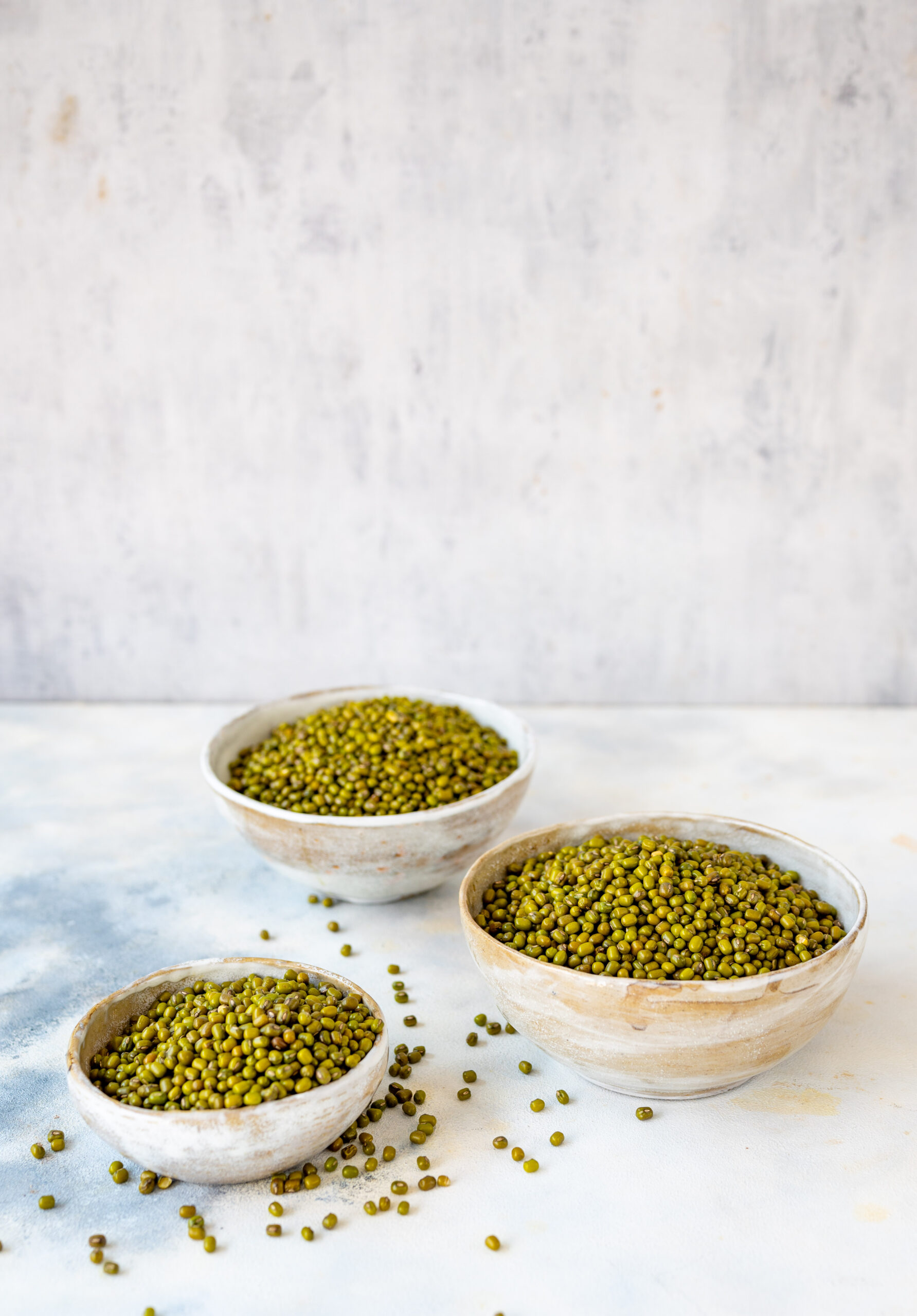Summers in India are usually a time when many people prefer to eat lighter meals, but a heatwave like we are experiencing now makes this all the more important. You may find yourself automatically desiring light meals when the climate is hot, and there’s a science to this. Heavy food affects the metabolism, taking longer to digest, and this process increases the heat in the body. The lighter the meal, the lower the amount of internal heat generated during the digestion process. For some, a light meal may be some cooling yogurt and rice, or may even constitute simply of a tall and refreshing glass of buttermilk. As a lover of salads, I find that they are ideal for this season, and can pack many nutrients into a simple (and yes, light) dish. This sprouted salad, using homegrown sprouts and an assortment of fresh veggies, is one I’ve been making very often, and I’m glad to share it with you too.
At the start of this year, I shared the method for growing sprouts at home. You can use any legume of your choice, including fenugreek, beans and more. I love my green mung sprouts, as you may recall from that post, along with brown chana sprouts. Brown chana, also known as black chickpea, is believed to be high in iron due to its colour. As a darker legume, it’s usually eaten in the winters (as it’s heavier on the digestion than the lighter looking ones). Nature has a wonderful logic to it, which we can attune our appetites to, so as to make the most of seasonal produce. For me, I have found that the health quotient of brown chana makes it appropriate even for summer consumption, and it has made its way into this dish. It is rich not only in iron but also in protein, vitamins, calcium, phytochemicals and magnesium, and has benefits for the heart and brain functions and regularising cholesterol and blood sugar.
I’ve had my share of carb binges, partying, exotic meals in exotic destinations and culinary indulgences of all sorts. As I’ve said before, moderation is key. For me, eating right is a conscious choice, especially as I get older, and I’ve found that one of the key elements to this is ensuring that I get adequate protein in every meal. From experience, I can tell you that there is no scarcity of choice for vegetarians. This sprouted salad is an excellent example. Adding sautéed pieces of tofu or paneer will also increase the protein component of the dish.
Now, there may be something familiar about this recipe to long-term friends of re:store. That’s because re:store was one of the first entrepreneurships in Chennai to open up salad subscriptions. Back when I started the company in 2015, salads were a major component of the menu, though I’ve since honed my focus on baked goods. This one was among the bestselling items, and if you’ve eaten it before and had a craving for it anytime since, here you go – this is the recipe I used then and still do, shared with love.
That also reminds me: that was around the time when complimentary food stopped being served on many flights, so I began to pack a small container of this sprouted salad as my mid-air snack on many occasions. I still do this, in fact. This healthy salad is my preferred travel companion for short flights. It ensures that I’m feeling nourished and energised by a protein boost when I land and head into my appointments at my destination. It has the same effect on tired minds and bodies in need of rejuvenation in the summer heat.
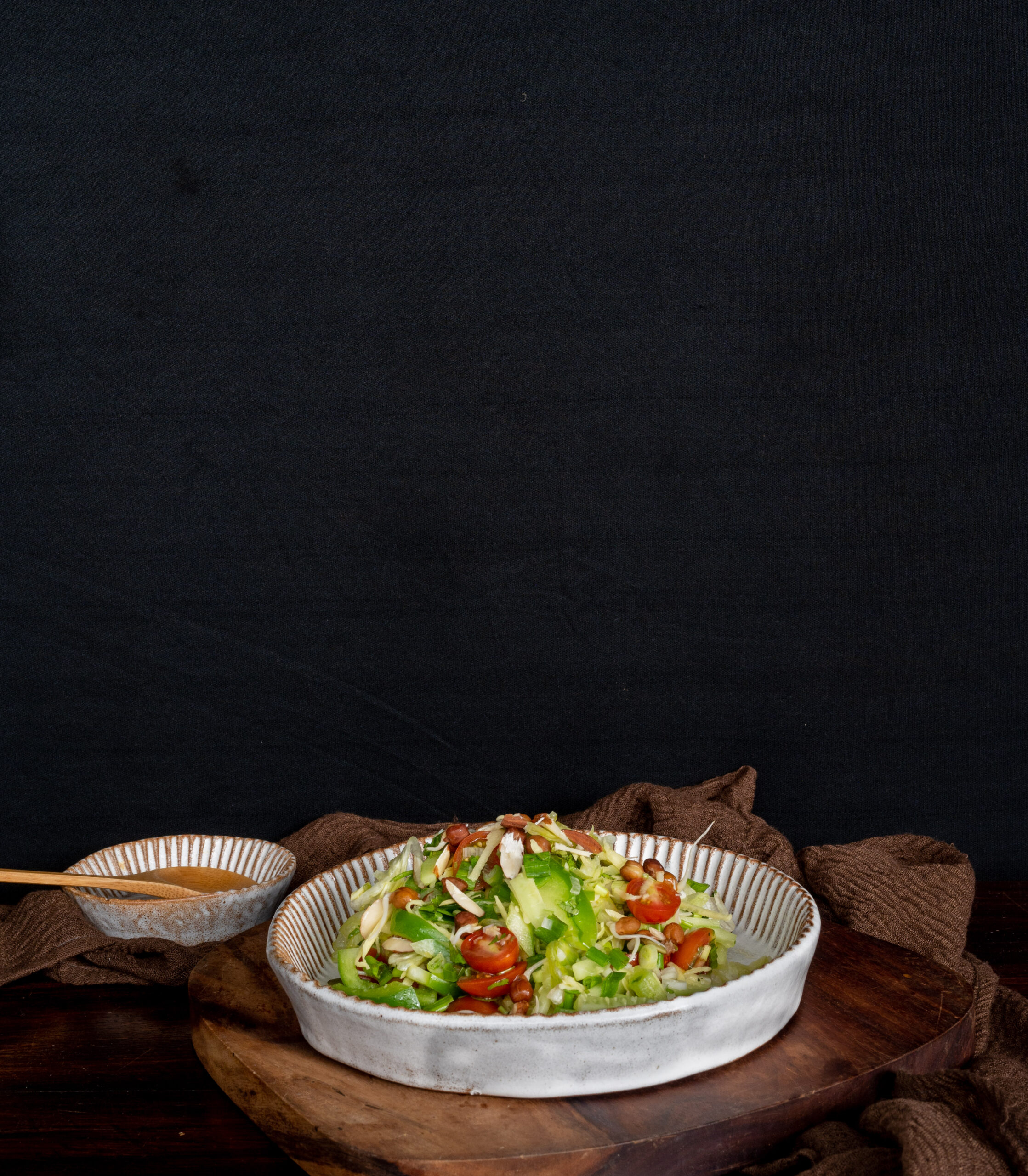
Sprouted Salad
(Serves 2)
Fresh Ingredients
2-3 tablespoons spring onions
¼ cup capsicum
¼ cup raw mango (grated)
a handful of cherry tomatoes
½ cup steamed sprouts
1 tablespoon jalapenos (finely chopped)
a handful of coriander leaves (finely chopped)
¼ cup cucumber
Dressing ingredients
Salt to taste
1 pinch pepper
1 teaspoon honey or maple syrup
Juice of ½ a lemon
1 teaspoon pomegranate balsamic (optional)
Pumpkin seeds
Chopped almonds
In a bowl, add all the fresh ingredients. Keep refrigerated until ready to serve.
Just before serving, add all the ingredients for the dressing and mix well.
When ready to serve, assemble all the ingredients, including the seeds and nuts, the dressing and the fresh ingredients. Mix well and gently. That’s all there is to it. Enjoy this delicious, nutritious salad and let it bring its refreshing qualities to your heat-busting methods.
You may have noticed the use of raw mango in this dish. I know some of you may be wondering whether my long-standing tradition of sharing ripe mango recipes and desserts, since the fruit is in season, will continue this year. However, given the heatwave, I thought I’d do something different and focus on replenishing and energy-boosting recipes. Don’t forget to drink lots of water, and you can always keep hydration interesting with a hearty lassi. On the subject of mangoes and indulgences, the recipe archive is right here for you to explore!
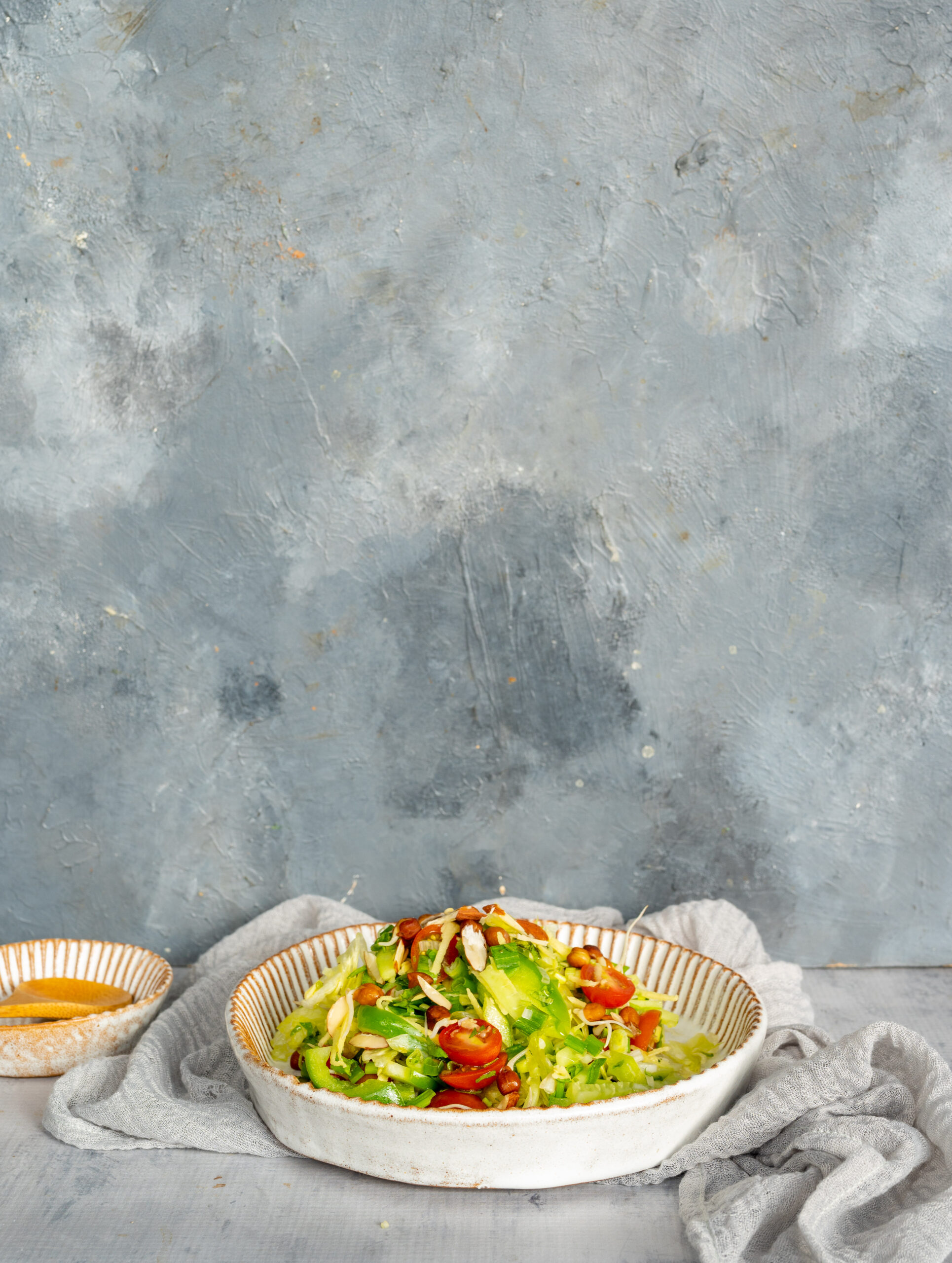

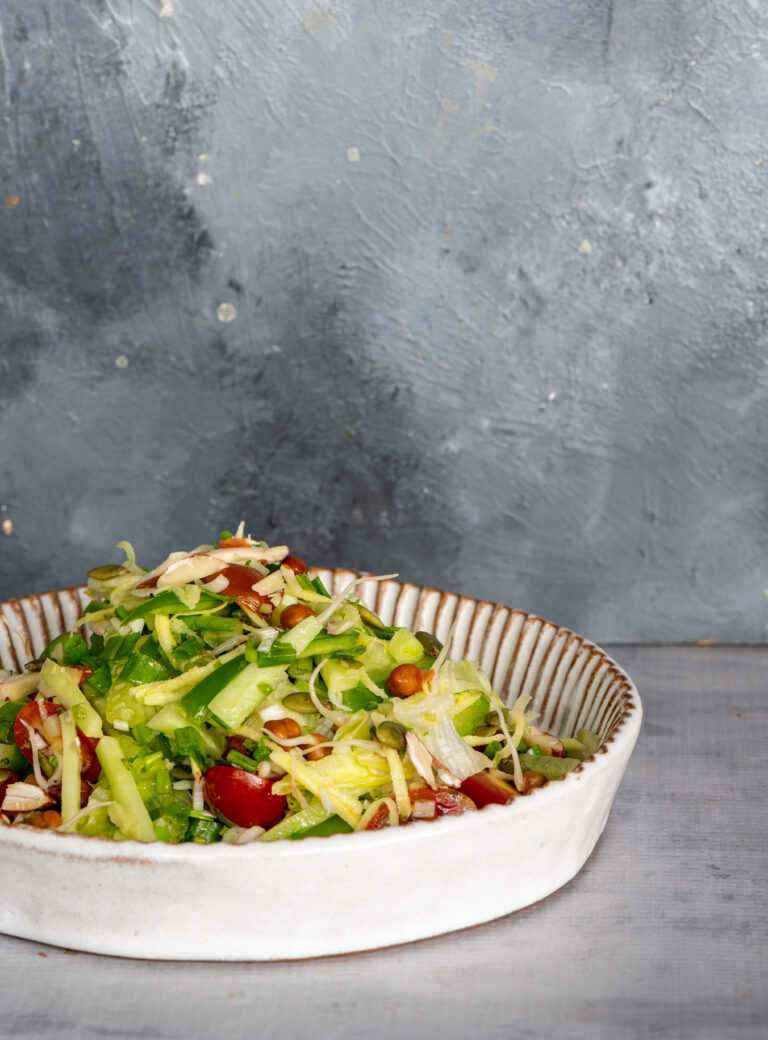
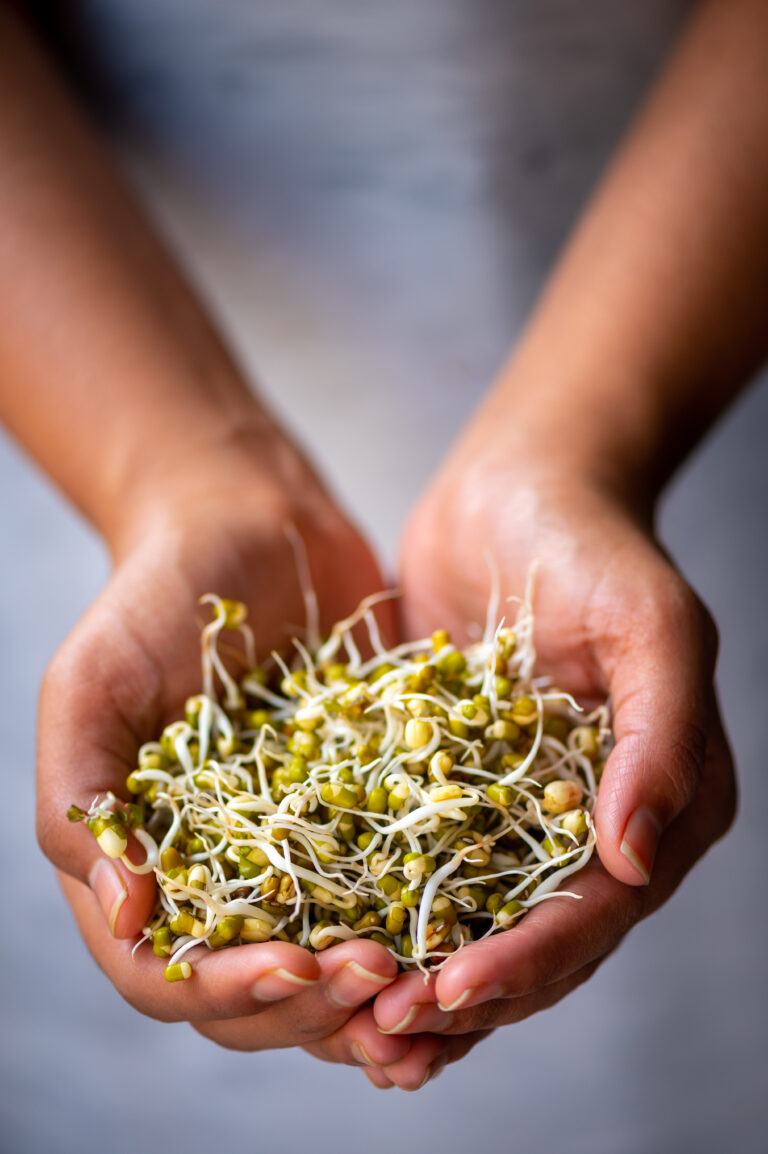
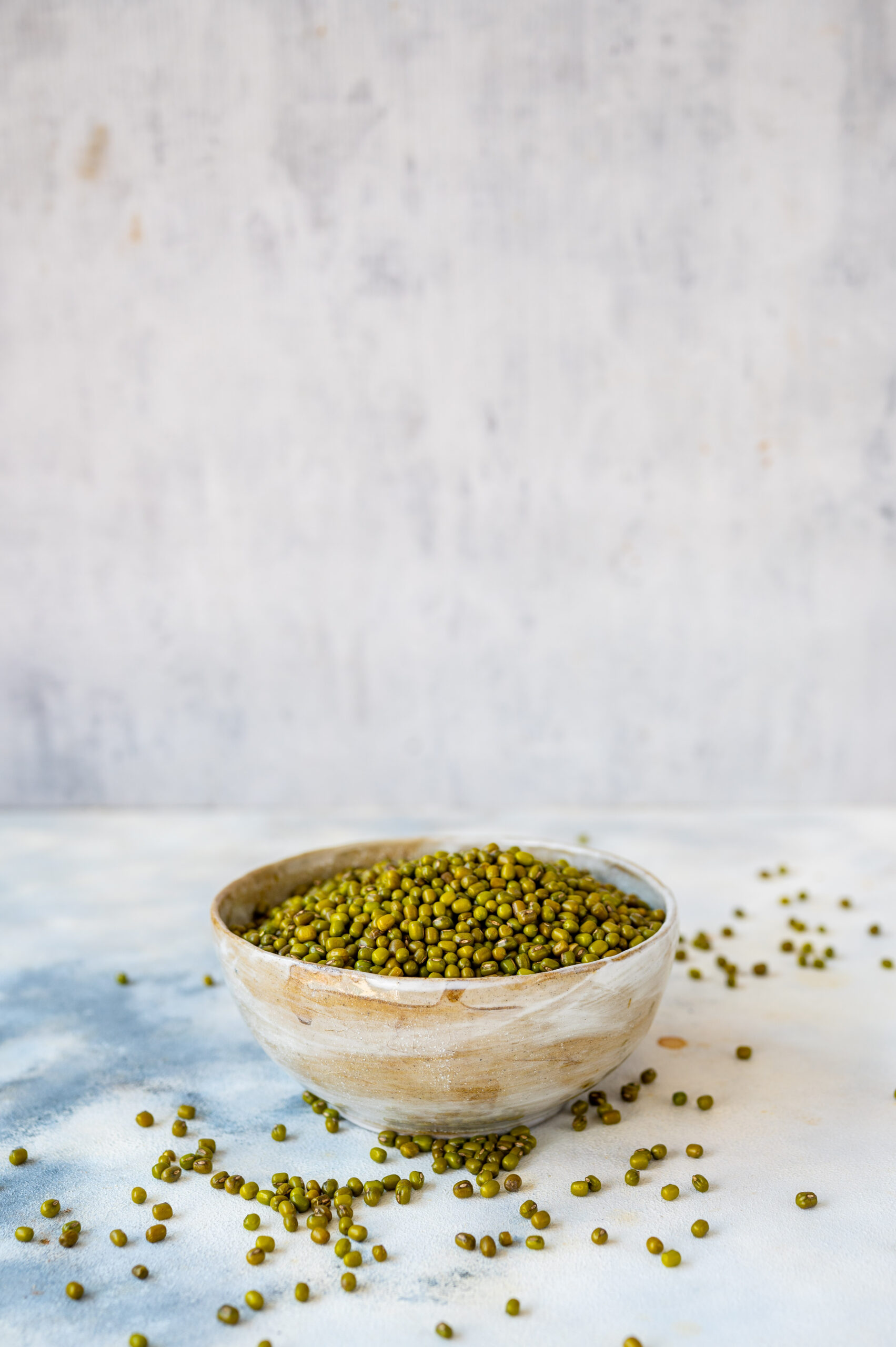
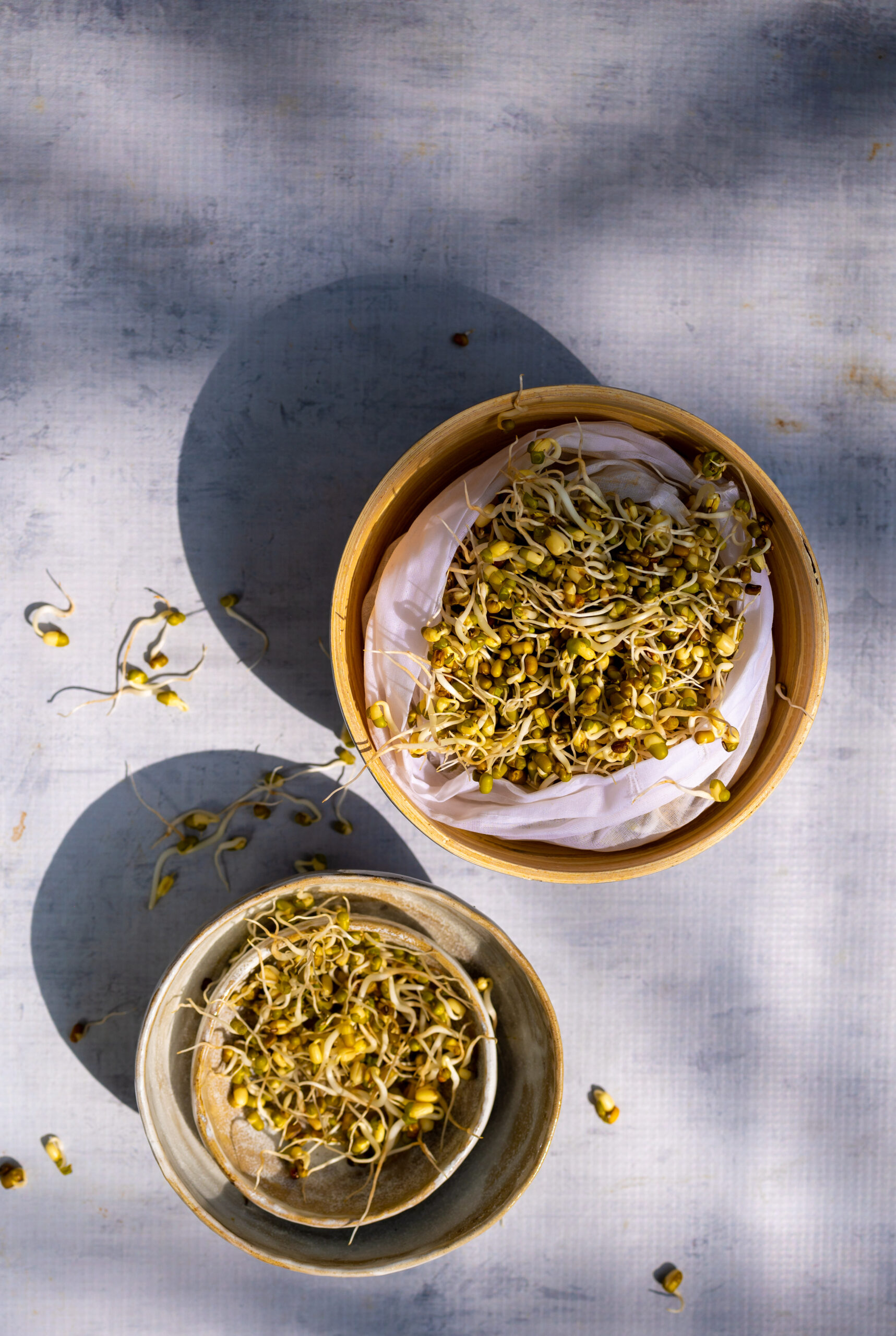
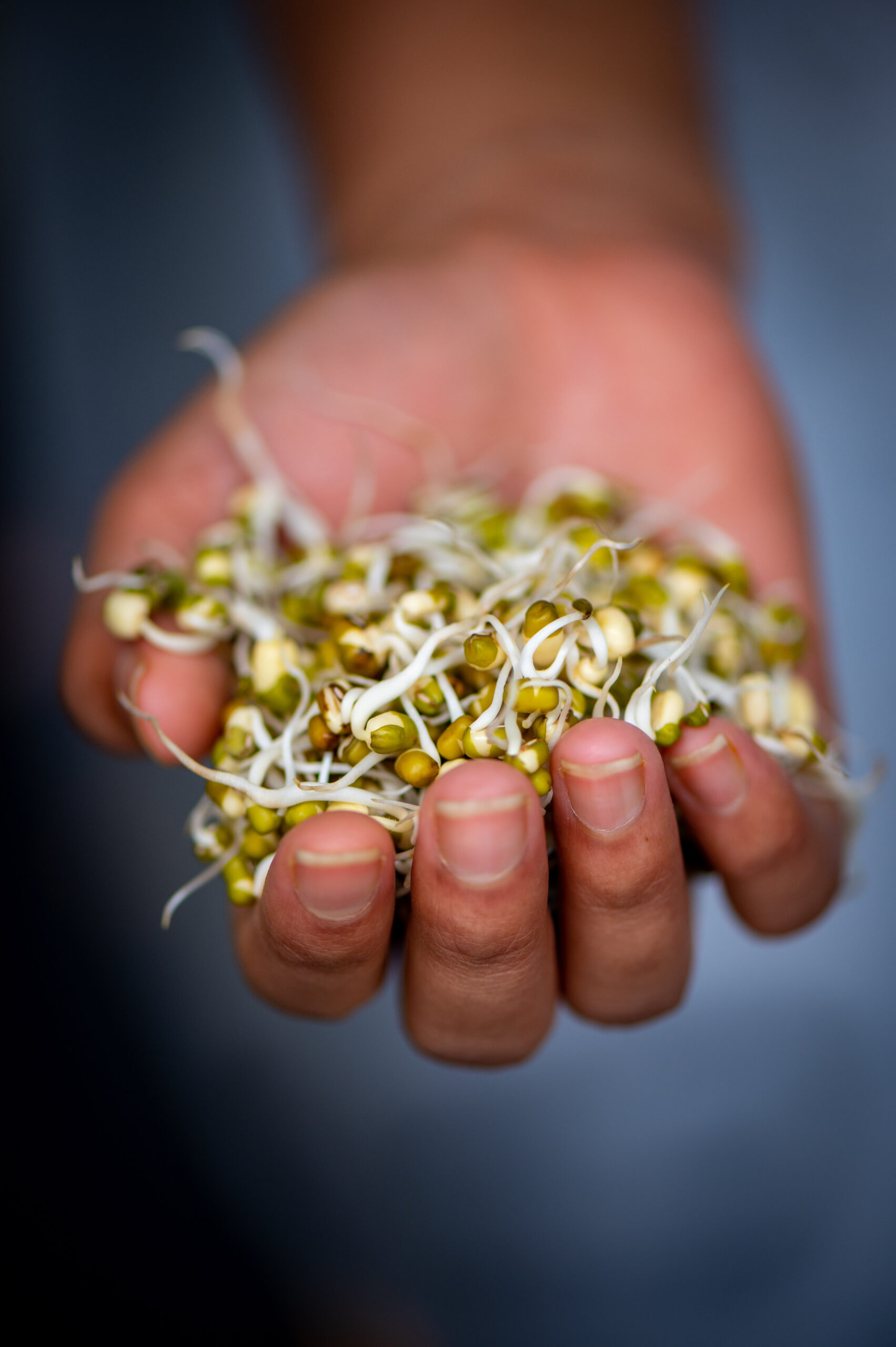
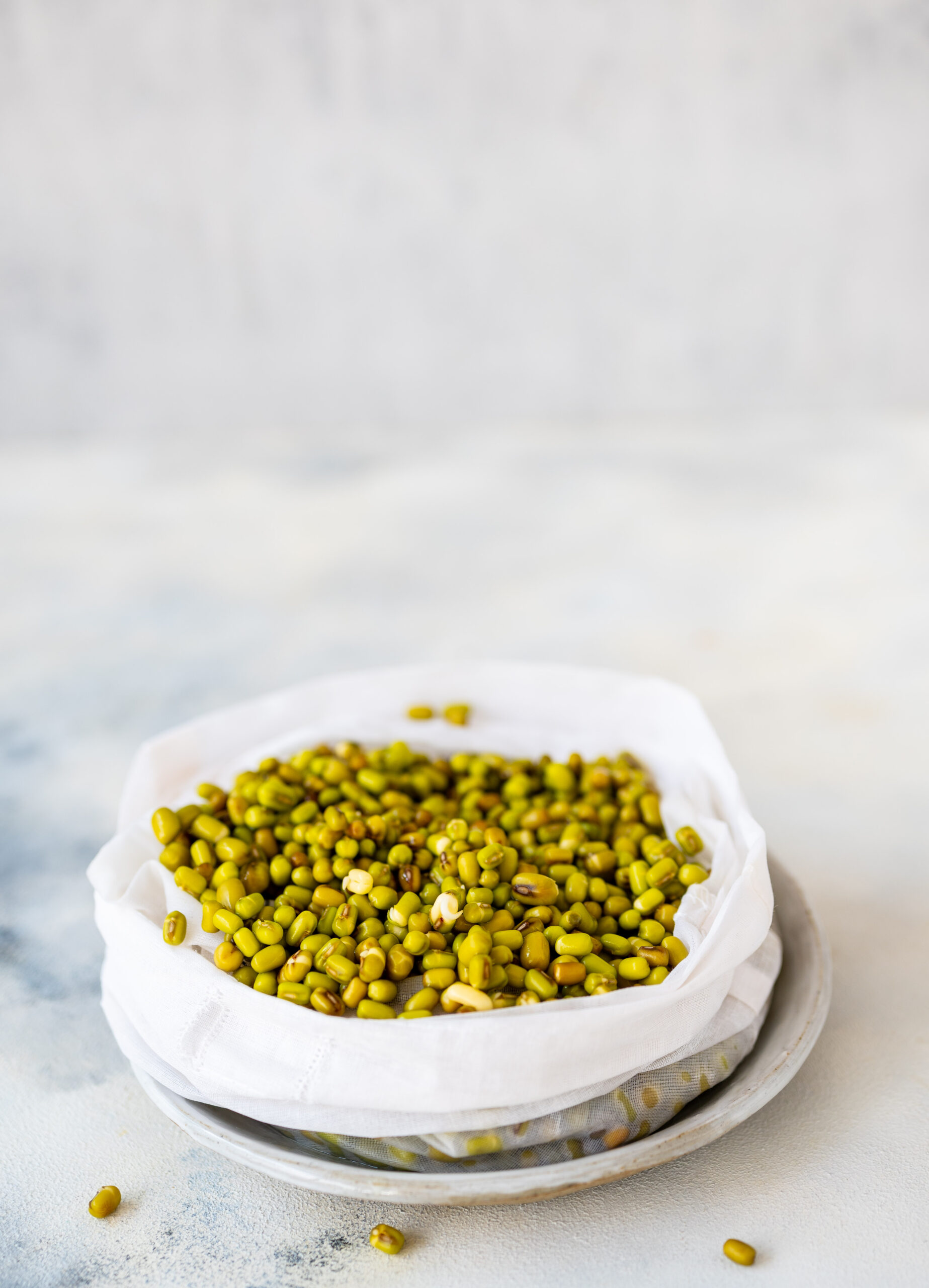 ‘
‘